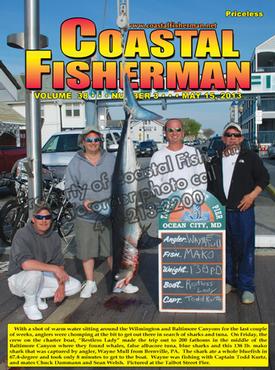


Article by Pat Schrawder
 MARINE ELECTRONICS UNDERSTANDING THE LANGUAGE
MARINE ELECTRONICS UNDERSTANDING THE LANGUAGE
Before we take a closer look at some of today’s “hot” items and technology, let’s examine some of the new terminology you’re likely to run into when shopping for electronic equipment. These terms are common to most, if not all, of the equipment on the market today.
“WI-FI” - This is basically just a term for wireless communications between two or more items of equipment on your boat. Many of today’s new items have the capability of wireless data sharing. In some cases, it is built-in and in others, it is an option that can be added. There are variations of Wi-Fi depending on the exact piece of equipment and the manufacturer but they all operate with the same basic technology. That is to say that the main item, generally a multi-function display (MFD), is able to be controlled by one or more other items such as your smart phone and/or smart tablet. This gives you the ability to make a 2nd station display or control head that is portable and can be used anywhere on the boat. With the right software or “app”, you can do many things. In some cases, you can sit at home and plan a trip with waypoints and routes on your home computer, then save it on an SD chip or transmit wirelessly to your MFD.
The term Wi-Fi may be a little confusing because we hear about it in relation to our computers and phones using the internet. When it comes to marine electronics, there are units that make use of the Internet but there are others that just communicate with each other without the use of the Internet. The term “networking” is often used interchangeably with Wi-Fi but not always accurately.
There are a couple of things to keep in mind when looking at purchasing new equipment advertised with Wi-Fi capability. Does it require the use of the Internet and, if so, will you have access to it? Are there any “hot spots” near you? Is your smartphone within range of the Internet? Do you have to have a smartphone or tablet to use the features of the equipment on your boat? Do you need an “app” and is it free? This is relatively new technology for boat use and it is likely to expand over the months and years ahead, so this year may be the time to start familiarizing yourself with its features, costs and requirements.
“CHIRP” - Many of today’s fishfinders make use of so-called CHIRP (Compressed High-Intensity Radar Pulse) technology for improved fish detection. In order to use this technology, you need a fishfinder that has DSP (Digital Signal Processing - sometimes referred to as CHIRP enabled) and you need to purchase a CHIRP broadband transducer. Airmar is the leader in those transducers and is, in fact, the supplier for most transducers available today, CHIRP and regular.
All transducers send signals from the boat through the water to the bottom. Conventional transducers mostly use one or two frequencies, typically 50 KHz and 200 KHz. Once the signal reaches a target, it reflects back to the sounder on the boat which interprets the returning signal and displays it on the fishfinder.
CHIRP transducers send signals of multiple frequencies (sometimes 90 or more) using a longer duration than a usual pulse with energy that is 10 to 1,000 times greater than conventional transducers. The result is that they cover more area under the boat with 5 to 10 times greater detail and resolution. They offer precise separation of bait, game fish and underwater structures and promise superior performance in noisy environments.
Who wouldn’t want all these features? You might ask yourself, “What’s the catch”? The answer can be found in the price at this point in time. Most of the CHIRP transducers are thru-hull models and their price range is $740 to $1,500, so this won’t be the choice for the majority of boaters but, for those who can afford it, they will have a distinct advantage over those without CHIRP.
“BACKBONE” - Most multi-function units on the market today are NMEA2000 compatible which just refers to their networking protocol. This is the way units connect together to “communicate” and share data. Ideally, a boat (especially a new one) will have one main transmission line called the BACKBONE running the length of the boat and accessible for the addition of “T” connectors and other lead lines that run to other items of equipment. I would expect that newly manufactured boats will start providing a basic “backbone” transmission line with one or more “T’s” and/or drop cables.
If you are shopping for a new boat, try asking about this option. It is far easier to install while the boat is under construction.
Next time we’ll take a look at the latest in charting.
Pat and her husband, Larry are owners of L&L Marine Electronics on Golf Course Road in West Ocean City, MD.